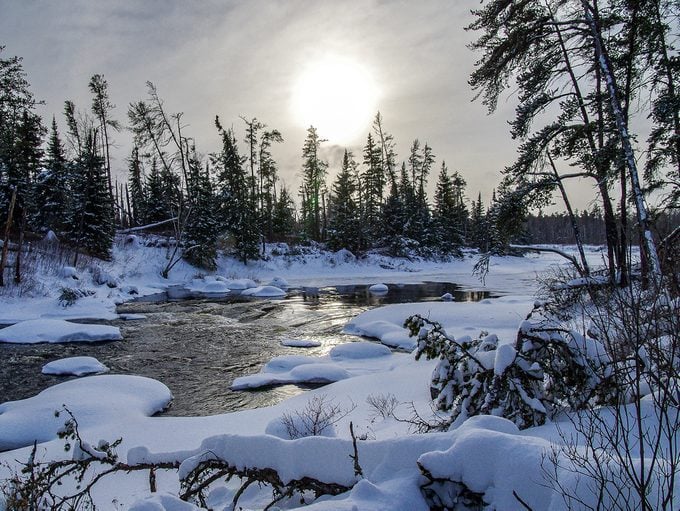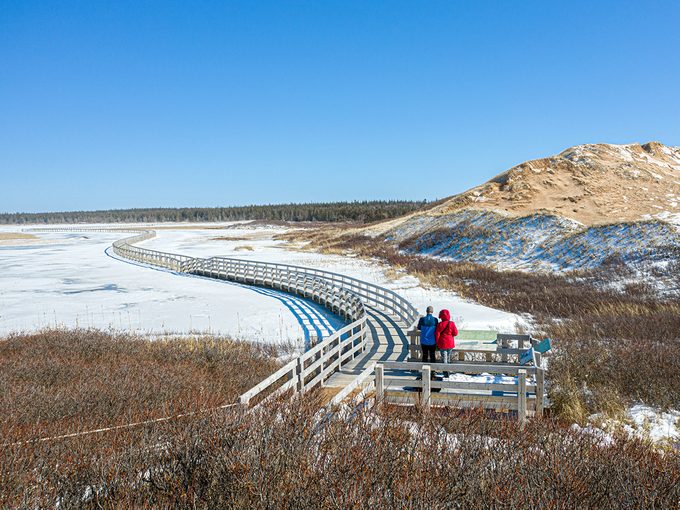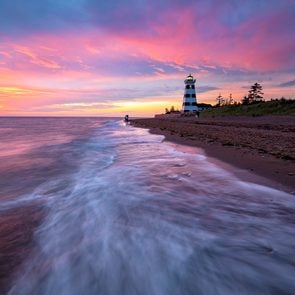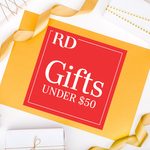The Best Winter Hiking Trails in Every Province
From family-friendly favourites to trickier routes designed to test your mettle, these gorgeous winter hiking trails are worth adding to your Canadian travel bucket list.

Canada’s Best Winter Hiking Trails
A scenic walk is one of the best ways to get outside and enjoy Canada’s long winters. The only equipment you need is a pair of hiking boots with a good tread, a pair of microspikes in case you run into ice and poles for those who like the support. Snowshoes aren’t necessary—unless Mother Nature delivers a dump of snow. Before you go, check weather reports and trail conditions. Don’t forget extra layers of clothes, hot drinks and high-calorie food.
Hidden Lakes Loop, Yukon
Whitehorse is blessed with an extensive network of walking trails that are just minutes from downtown. Hidden Lakes, a popular winter hiking destination, is a chain of kettle lakes in a landscape of ponds, marshes, and mixed pine and aspen forest. Enjoy an easy 1.8-kilometre interpretive walk around the smaller of the lakes, or continue around the largest lake to complete a loop that will take several hours. Serious hikers can extend the hike and continue to Chadden Lake via the Lakes Trail.

Wapta Falls, British Columbia
If you choose a sunny winter afternoon to hike to Wapta Falls in Yoho National Park, you’ll be rewarded with Instagram-worthy shots of the falls. They are impressive both for their size (107 metres wide by 18 metres high) and their location (with snow-covered Rocky Mountains peaks serving as a stunning backdrop). The four-kilometre, one-way hike is straightforward, climbing just 113 metres—but if you’re hoping to visit the viewpoint, microspikes are a good idea to descend the often-slippery slope.
Check out more of Canada’s most beautiful waterfalls.

Johnston Canyon Ice Walk, Alberta
The Johnston Canyon Ice Walk in Banff National Park is a perennial favourite, no matter what your age or fitness level. Over the course of 2.7-kilometres one way, you’re treated to gorgeous views of multi-coloured canyon walls, two sets of frozen icefalls including one where you might catch ice climbers in action along with a fun section on a cantilevered catwalk. The walk is on an ice-snow mix, so strap on microspikes to keep you upright.
Boundary Bog Trail, Saskatchewan
The easy two-kilometre Boundary Bog trail, located near the East Gate of Prince Albert National Park, is a delight, especially in winter with a fresh dusting of snow in the trees. The family-friendly loop hike does a few easy climbs as it heads through a boreal forest of tamarack and mixed spruce to reach a black spruce bog. Here there’s a boardwalk in place to protect fragile mosses you can’t see in winter. (Be sure to check out the lookout tower over the lake.)

Pine Point Trail, Manitoba
Drive two hours east of Winnipeg to reach the Pine Point Self Guiding Trail in Whiteshell Provincial Park. The popular trail heads straight through the woods to reach stunning Pine Point Rapids, which boasts open water even in the middle of winter. After warming up in the wood-heated shelter, choose one of three options to return. Retrace your steps for a 4.8 km outing; do a rugged but scenic 5.1-kilometre loop trail or complete an 8.2-kilometre figure-8 loop that includes small but beautiful Acorn and Viburnum Falls.
Here’s what it’s like hiking the Mantario Trail in Whiteshell Provincial Park.
Trout Hollow Trail, Ontario
The Trout Hollow Trail is a 14-kilometre loop hike near Meaford, that starts in Beautiful Joe Park, a tribute to Marshall Saunders who wrote the international bestseller, Beautiful Joe. Hike up one side of the Bighead River and back along the other, enjoying fantastic views when you climb out of the river valley. Sights along the trail include the ruins of a power dam and the Trout sawmill where Sierra Club founder John Muir lived for a few years in the 1860s.
Île Saint-Marguerite – Île de la Commune, Quebec
Just outside downtown Montreal, the beautiful Îles-de-Boucherville National Park is home to an archipelago connected by walkways. There’s the option to hike a seven-kilometre loop on Île Saint-Marguerite, a five-kilometre loop on Île de la Commune or to combine them to make a 12-kilometre outing. Both loops are flat, easy, and family-friendly, but Île Saint-Marguerite is busier while Île de la Commune can get windy. Enjoy views of the St. Lawrence River while keeping an eye out for white-tailed deer.
Parlee Brook Amphitheatre Trail, New Brunswick
Drive 15 minutes southeast from Sussex to reach the Parlee Brook Amphiteatre Trail. Follow a boot-beaten path for 3.3 kilometres as it weaves up through the forest, climbing 140 metres to reach a narrow ice valley, with an impressive frozen icefall at its end that’s popular with the ice climbing crowd. Microspikes are recommended once you’re in the ice valley. Extend the outing and get a great view by hiking a side trail up the Friar’s Nose Lookout, one of the peaks in the area.
Cape Split, Nova Scotia
One of Nova Scotia’s most scenic trails is the 13.2-kilometre loop out to Cape Split overlooking the Bay of Fundy. Sea stacks, ocean vistas and stunning 60-metre cliffs reward those prepared to do the four- to six-hour hike. The trail has recently been upgraded and lengthened so there are now numerous viewpoints of the Minas Basin and Scots Bay to break up the forest walking. Access is easy from Wolfville, just 30 minutes away.
Discover more essential experiences on Canada’s east coast.

Greenwich Beach, Prince Edward Island
Even though the Greenwich Dunes Trail in Prince Edward Island National Park isn’t maintained, it’s a popular winter outing (provided the wind isn’t blowing hard). The hike is an easy 2.4 kilometres one-way with almost zero elevation gain. Continue once you reach the Atlantic Ocean for kilometres on a beautiful stretch of beach. The well-marked trail starts at the parking lot just past the Interpretation Centre and features farmland, forest, a floating boardwalk and giant parabolic sand dunes.
Spurwink Island Path, Newfoundland
The Spurwink Island Path, one of the most scenic but challenging sections on the East Coast Trail, is very popular with winter hikers, even though the trail isn’t maintained. (Of course, this means you should avoid it during or after a windstorm.) Set aside seven to 10 hours to complete the 20.4 kilometre hike between Aquaforte and Port Kirwan and organize a shuttle or pick-up at the end. The rewards are high: fjords, barrens, cobble beaches, and the Berry Head Sea Arch.
Leigh McAdam is a Calgary-based writer and founder of the outdoor travel blog Hike Bike Travel.
Next, check out the 10 places in Canada every Canadian needs to visit.






